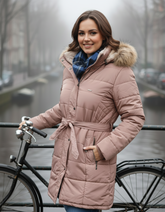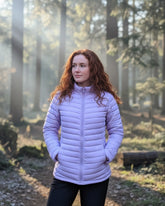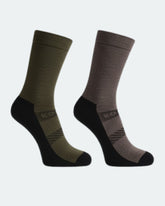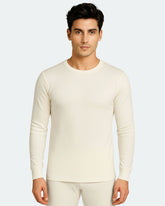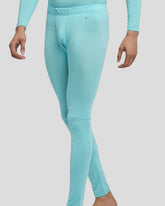Road Tripping Across Alaska with Amrita Diwanji
Table of Contents:
1. Winter Wear for Alaska Trip: A Photographer’s Immersive Journey
2. From Corporate to Camera: Amrita’s Essential Winter Wear for Alaska Trip
3. What to Wear in Alaska Road Trip: Amrita's Recommendations
4. Kosha Thermal Wear for Alaska: Staying Warm in Extreme Conditions
5. Best Travel Wear for Women on Alaska Road Trip
6. Travelers Jackets For Women: Winter Wear For Alaska Trip
7. Must Have Winter Wear For Alaska Trip
8. Travel for Your Next Adventure: Winter wear for Alaska trip
9. FAQ
Immersive, slow travel is the future of travel: choosing to take road trips or the rail rather than flights to decrease our carbon footprint. Next time consider twice before flying in and out on a weekend simply because it is a cheap flight. And in case you believe that slow travel is dull, keep on reading!
From road tripping across Alaska to kayaking in Trinidad & Tobago, I spoke to five inspiring travelers about their immersive experiences. The first is Amrita Diwanji, a photographer who left her job as a consultant to become a photographer.
From Corporate to Camera: Amrita’s Essential Winter Wear for Alaska Trip
Photography is something that has followed Amrita since she was in college. She loves art not only to have memorable moments or to be gram-worthy. Whether it was the painting-like landscapes of Yorkshire, the scenes of people, food and culture that she encountered during her visits to Paris; Amrita never lost touch with the art. This tug of photography was too hard to resist. Hence, she quit her corporate career in Consulting in 2014 and made her dream come true to be a photographer.
I spoke to Amrita about her 25-day Alaska road trip from India experience.
What to Wear in Alaska Road Trip: Amrita's Recommendations
What is travel to you, Amrita?
Traveling has now become a very natural and emerging aspect of my life. Since I changed my career 11 years ago and became a full time professional photographer, I take my trips to new locations once a year and spend approximately 3 months on the road. Naturally, this year that is going to change vastly!
Why did you decide to go there and how did you get there?
Alaska has always been in my list of destinations where I would have wanted to visit- it is every photographer's dream to be able to photograph the rugged and vivid terrain in Alaska. As soon as I discovered people who were ready to go on a tour of the state together with me in an RV, there was practically no turning back.
I flew from Bombay to Las Vegas via London, had a stopover for a couple of days in Vegas (where I picked up some essential travelers jackets for women and a sturdy trench coat to brace for the Alaskan cold), before flying to Anchorage via Seattle. Of course, there is no way a winter trip can be complete without warm woolen socks, which I was lucky enough to have my Kosha thermals to help me get through the bone-chilling cold weather!
Kosha Thermal Wear for Alaska: Staying Warm in Extreme Conditions
It was a mesmerizing evening to see the Northern Lights in the sky at the Denali National Park in Alaska that was part of our road trip. We had driven for hours, bundled up in our winter wear for Alaska trip - layered with Kosha Men's Merino wool thermals l wear for Alaska to brave the sub-zero temperatures and just as we were about to call it a night, the sky erupted in swirling greens and purples. It was almost unreal. It felt that the universe had been placed on hold just so that we could experience it.
The second experience that I can never forget was kayaking among glaciers in the Kenai Fjords national park. The silence which was interrupted briefly by the crack of ice, made me feel so piercingly small but close to nature. For that adventure, dressing right was key - I made sure to pack the best travel wear for women on Alaska road trip, including waterproof jackets, Merino wool thermals for women leggings, and moisture-wicking base layers.
What Alaska taught me was that the right gear needs to be comfortable; that allows you to get in touch with the wild and the untamed beauty of the destination to the fullest.
Best Travel Wear for Women on Alaska Road Trip
I felt so privileged to have visited Kenai Fjords National Park on my road trip to Alaska. We started at 5 am and our time commitment was paid back near instantly, just a few minutes after departing we met three orcas within arms reach of our boat, their sleek black and white physiques slicing up the frozen water. magic had already been started.
The boat dropped us at the fjords, where we pulled on our wetsuits (layered over Kosha thermal wear for Alaska for extra warmth) and launched our kayaks into the 2°C stillness. It seemed the world was temporarily suspended - glaciers rose to meet us and their images were perfectly reflected on the surface of the glassy water and low clouds that formed the silhouettes on the mountains like spun cotton.
Kayaking through icy waters surrounded by snow-capped peaks wearing Kosha’s essential winter wear for Alaska trip.
With the breaking of dawn my brilliant yellow kayak darted between little icebergs, their edges blue. Inquisitive seals have poked their heads out, and the instant they saw us they disappeared in a splash. Then there was a bang, a massive crack resounded across the fjord, a piece of the glacier broke off into the sea, a severe reminder of nature in its raw form and the heartbreakingly fast rate of global warming.
At noon we were adrift, eating lunch in our kayaks and the glacier towering in front of us. Bundled in my reliable traveler’s jacket for women and Woolen socks in India for Women, I remember thinking: This is why we travel.
If you are someone who is road tripping Alaska anytime soon, my packing tip is to pack the best of travel wear on an Alaska road trip, moisture wicking layers, and of course, Kosha thermals. And when nature gives you a moment such as this you will want nothing between you and the magic.
Travelers Jackets For Women: Winter Wear For Alaska Trip
Fjords are a spectacular, glacially carved, inlet and are known as the masterpieces of nature that are located in polar regions such as Alaska, Norway and New Zealand. My Alaska road trip from India was a deep dive into this icy wonderland, made possible by an expertly crafted RV itinerary.
The Trip: Glaciers and Beyond Anchorage
It is an unforgettable journey that has been designed by my cousin, Aditya Munshi (founder of The Wayfarer Travel Co.).
Map highlighting key stops for a winter wear for Alaska trip, including Denali National Park, Kenai Fjords, and Anchorage Airport.
Anchorage > Portage > Whittier > Exit Glacier > Seward > Kenai Fjords National Park > Talkeetna > Ruth Glacier > Denali National Park > Wonder Lake > Anchorage > Juneau > Mendenhall Glacier
Kayaking along with calving glaciers in kenai fjords and standing in Dane Western glacier with my mouth gaping open was an eye opener in every place we visited.
Life Lesson: Nothing is Impossible
With a slipped disc and ongoing back problems, I also overcame treacherous inclines, freezing water kayaking tours and a 500 feet hike Via Ferrata. The secret? Grit, physiotherapy, and trusting my body (and my Kosha thermal wear for Alaska to keep me warm!).
Vegetarian Survival Guide
The seafood in Alaska is legendary (a shout-out to Deckhand Dave Fish Tacos in Juneau!), but vegetarians can do very well as well:
-
Your best friend is a supermarket: Buy fruit in season, soup packets and canned beans.
-
The Happy Cow application assists in finding veg-friendly places.
-
Tip: Prepackaged foods are a good idea in far locations where foodstuffs are limited.
Last Travel Tips
Get your windproof trench coats for women with the best travel clothes for women in the road journeys to Alaska and top that with moisture wicking base layer.
Don’t skip woolen socks for women; frostbite isn’t glamorous.
Living in an RV requires adaptability: Catch sunsets, stop at wildlife and allow the raw nature of Alaska to inscribe your description of adventure.
Must Have Winter Wear For Alaska Trip
Correct packing is the key to survival in Alaska. Following are the non-negotiables:
-
Lightweight Layered Clothing - Wool base layers (like Kosha thermal wear for Alaska) trap heat without bulk.
-
Tough Hiking Boots - Waterproof, ankle supporting boots on rocky ground and slippery surfaces.
-
Woolen socks in India for Women - Warm toes; chilly fingers spoil the fun of the outdoors.
-
Waterproof Jacket w/ Detachable Liner - Rain, wind, and snow ready (bonus you have pockets to reach quickly when you need to).
-
Dry-Fit Tops & Leggings - Sweat-wicking material is what is essential on busy days.
Did you know? Alaska has crazy temperatures (2 C to 15 C when I was there). Onion out the layers: the base thermal, insulating mid-layer (fleece/ pullover) and shell jacket. Keep in mind touchscreen gloves (the merino wool gloves that Kosha wears are a godsend to cold photography!)
Image by Zongnan Bao on Unsplash
Travel for Your Next Adventure: Winter wear for Alaska trip
How to plan an Alaska road trip in India? Don’t forget to pack the right winter wear for the Alaska trip to stay warm and comfortable. If you are looking up what to wear on an Alaska road trip, Kosha thermal wear in Alaska would make a fine choice of layering against extreme cold. For the best travel wear for women on Alaska road trip, consider versatile options like travelers jackets for women, a stylish yet functional trench coat for women, and cozy woolen socks for women to keep your feet warm.
Shop the full collection of winter travel products made exclusively for cold weather destinations such as Alaska.
Be prepared to experience the adventure of life with the high-performance winter wear that Kosha offers - where style meets survival. Visit our line and pack your bags!
This is a special series of interviews by Kosha Founder Yuktie Jhangiani in which she talks to people who she finds inspiring.
FAQ:
1. What do I need to do to take an Alaska road trip out of India?
When organizing an Alaska road trip as a citizen of India, one must prepare very thoroughly including the cold weather. Pack layered clothing, including Kosha thermal wear for Alaska, insulated jackets, waterproof boots, and accessories like gloves and Men's Woolen Socks in India. Look into the conditions on the roads, the availability of rental car choices and non-touristy places you can visit to experience slow travel.
2. What are the most suitable wearings during a trip to Alaska during winter?
The best winter wear for an Alaska trip includes moisture-wicking base layers (like Kosha thermal wear), insulated travelers jackets for women, a windproof trench coat for women, thermal leggings, and woolen socks for women. The next important thing that helps someone remain warm and still explore at an easy pace is layering.
3. Is it possible to use Kosha thermal wear on extreme cold in Alaska?
Yes! Kosha thermal wear for Alaska is designed for extreme cold, offering warmth without bulk. They can be used as the bottom layer to wear jackets over as their thermals are ideal and fit under jackets. This can be used in case of slow travelers who tend to spend a lot of time outside; be it hiking, road-tripping, or sightseeing.
4. Which travel wear works best in Alaska road trips by women?
To have the ultimate road trip travel wear women should choose multifunction, quality outfits in form of:
-
A long-lasting fashionable trench coat on ladies (windproof and water-resistant).
-
Women travelers jackets fleece lined.
-
Thermal innerwear from Kosha .
-
Thick woolen socks for women and waterproof boots.
These guarantee warmth and comfort and also keep your luggage light.
5. How can I practice slow travel during an Alaska road trip?
Slow travel in Alaska involves being an environmental and cultural tourist; slowing down and spending more time in fewer destinations, patronising local businesses, and not being too interested in sightseeing. Pack practical winter wear for Alaska trip (like Kosha thermals) to comfortably enjoy long hikes, cozy cabin stays, and spontaneous detours.
Editor’s Picks
Alaskan Parka Jacket For Women - Slim Fit
- ₹8,925.00
₹11,900.00- ₹8,925.00
- Unit price
- / per
Lightweight Packable Puffer Jacket For Women
- ₹5,040.00
₹8,400.00- ₹5,040.00
- Unit price
- / per
Alaskan Parka Plus Size Jacket For Women
- From ₹10,125.00
₹13,500.00- From ₹10,125.00
- Unit price
- / per
Woolmark Full Sleeves High Neck Thermal Top For Women
- From ₹1,845.00
₹1,845.00- From ₹1,845.00
- Unit price
- / per
Men's Pack Of 2 Merino Wool Cushioned Technical Socks
- ₹2,148.00
₹3,580.00- ₹2,148.00
- Unit price
- / per
